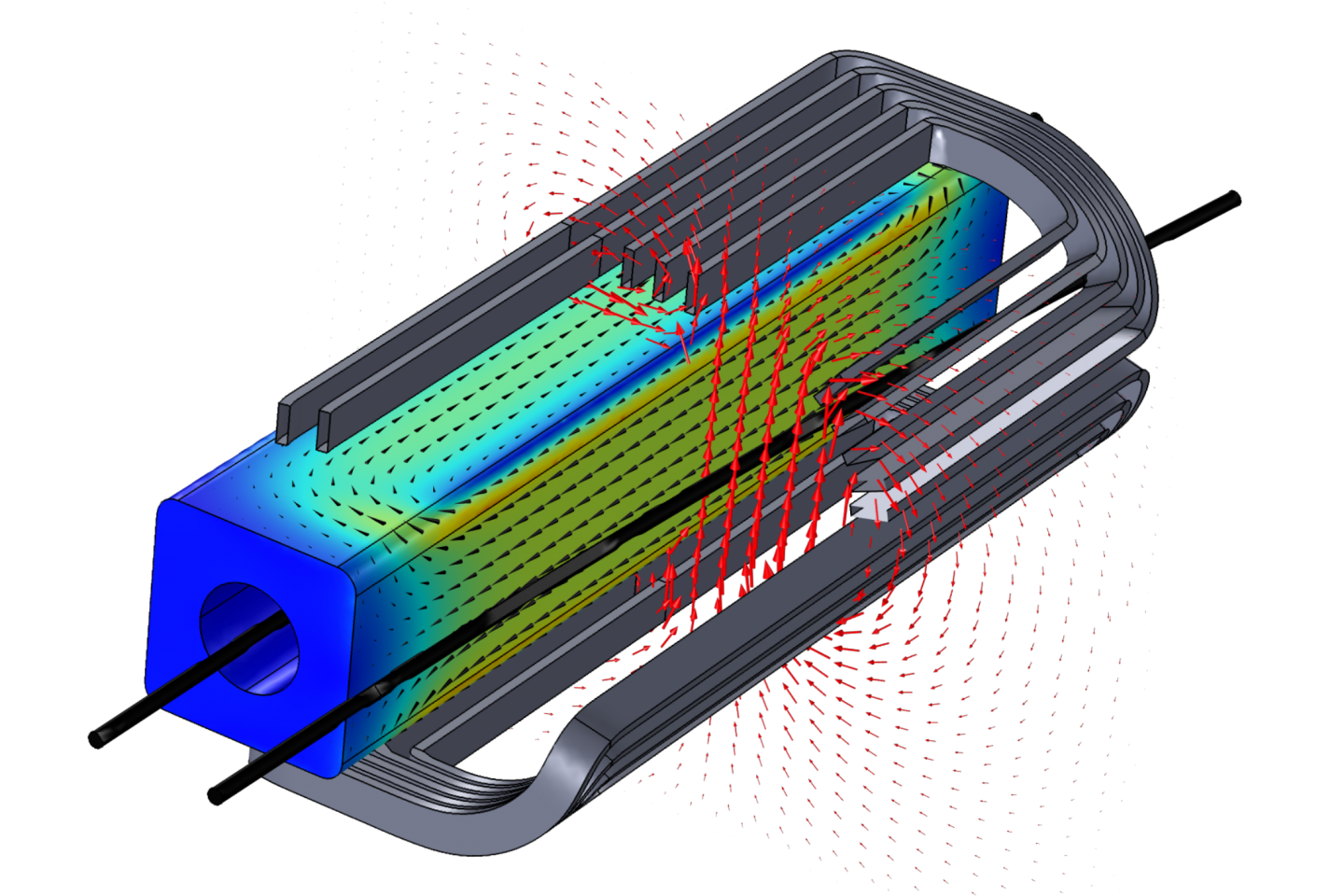A brand new piece of technology called SuShi, a Superconducting Shield septum magnet, is being developed for CERN’s Future Circular Collider study, to protect the future machine from the beam’s anticipated extremely high energy.
To ensure the continuity of CERN's diverse scientific programme, the Future Circular Collider (FCC) study was launched in 2014 to explore scenarios for post-LHC circular colliders. The unprecedented size of this future machine creates exciting technological challenges, as it requires as-yet-unimagined concepts for many of its key subsystems. The huge amount of energy stored in the circulating beams is expected to be around 8.4 GJ – equivalent to the energy of 24 TGV trains, running at a speed of 150 km/h. Since the energy is so high, a completely new extraction system will be crucial for machine protection, as the beam must be safely disposed of in the event of a failure or at the end of an experimental cycle.
The extracted beam is kicked into the high-field region of the septum magnet by a fast-pulsed kicker magnet to receive the final, and significant, deflection towards an external beam dump. At the same time this magnet must produce a very low field in the circulating beam. The transition between the two regions of the septum magnet must be as sharp as possible to reduce the required strength of the upstream kicker system.
The new solution is based on the concept that a passive superconducting shield can create a zero-field region inside a strong external magnetic field by inducing persistent eddy currents on its surface, automatically arranged in such a way as to fully cancel out the field in its interior.
A collaboration between CERN and the Wigner Institute for Physics (Budapest, Hungary) was established, under the framework of the FCC Study, to evaluate the feasibility of a new concept for this part of the machine, and to propose realistic materials and technologies.
Three possible candidates have been selected for the first tests: a bulk MgB2 tube, a multilayer, helically wrapped, high-temperature superconductor tape on a copper tube, and a sheet made up of layers of niobium titanium, niobium and copper. The first prototype was successfully tested in February 2017 at CERN's SM18 facility, and could shield 2.6 T at its surface with a wall thickness of 8.5 mm. This is already around 2.5 times more efficient than the Lambertson septum magnets used in the LHC.
Tests for the two other prototypes are planned for later this year. Once the performance of all three prototypes has been evaluated, the best candidate will be chosen for more sophisticated tests and further prototyping.
For more information, visit the project website: http://cern.ch/sushi-septum-project.

